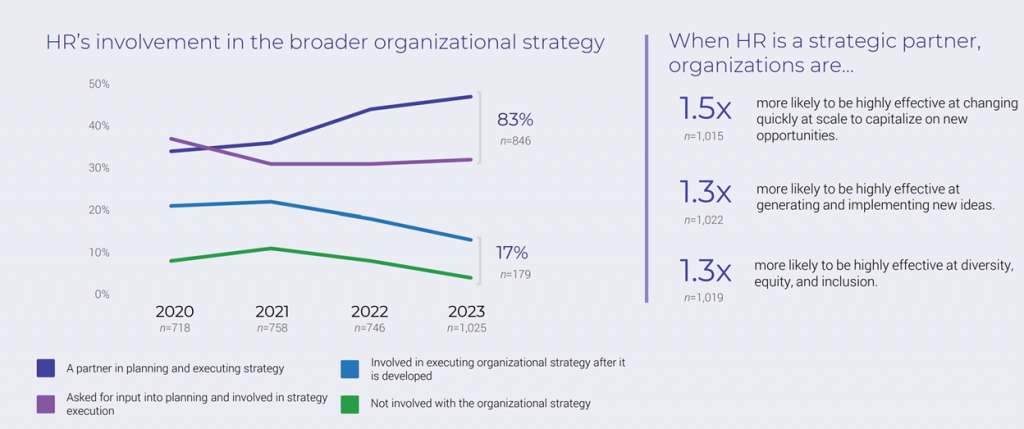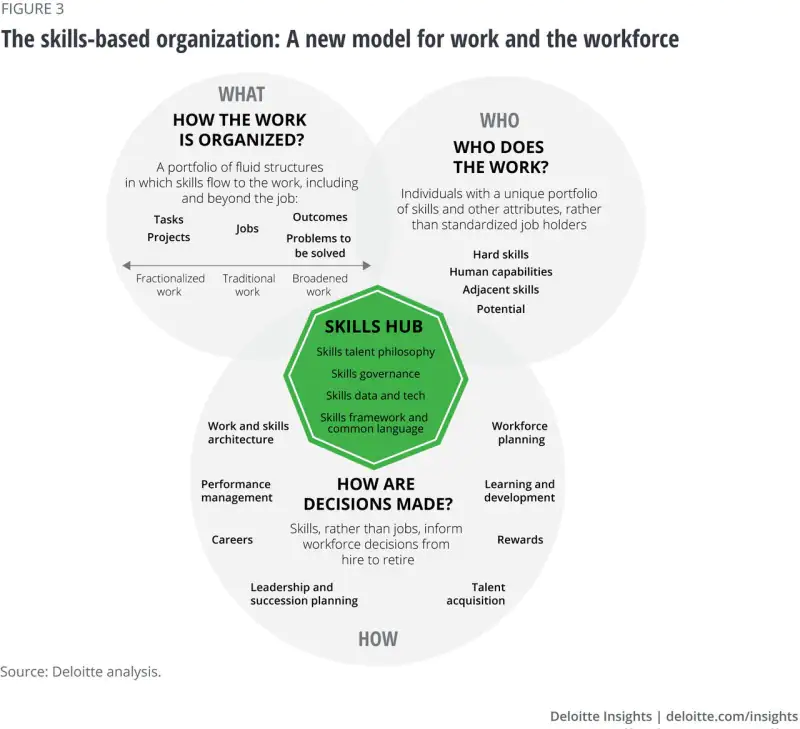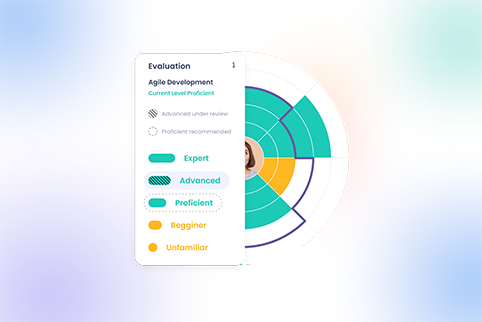
By examining 2022, a big year for HR, with increased involvement in the broader organizational strategy, we can start preparing for the top HR trends in 2023.
The changing nature of jobs, the new normal of hybrid work, increased employee expectations, skills shortages, and the Big Resignation wave were all topics on HR Leaders’ agendas. As David Green, Director at Insight222 & myHRfuture.com points out:
“During this time, the chief human resources officer (CHRO) and the HR function have become as important to the organization as the chief financial officer and the finance function were during the Global Financial Crisis.“

2022 was also the year when HR and people leaders had to incorporate the lessons of the pandemic. On one hand, the workforce is more diverse than ever, comprising multiple generations in the field of work as well as an alternative workforce that is growing in numbers and includes contingent workers.
On the other hand, workforce expectations have shifted. People want flexible working, respect, purpose, and clear career paths forward. The adoption of new business models as a result of digitalization as well as the prospect of a possible recession are adding even more complexity. Setting the context, let’s deep dive into the top HR trends in 2023:
HR trend #1: Workforce productivity in the wake of an economic downturn
It’s become a grim presumption that we’ll experience a global recession in 2023 and the first signs are already visible. HR executives and leaders will have the difficult task to find the right balance between possibly costs cutting measures, further investing in talent and leadership development, and enhancing employees’ productivity.
Challenge: Traditionally, in the pre-pandemic world, any recession period was followed by layoffs as a measure to reduce the pressure on costs. Several tech layoffs have already made the headlines lately. Still, the talent market remains tight, making it less probable for these layoffs to spread.
Opportunity: On the other hand, HR and people leaders will probably focus instead on increasing employee productivity. To understand the facts behind this, companies must leverage people’s analytics and find the answers to key questions:
- Why are some employees more productive than others?
- Do they have the right capabilities?
- How does remote work influence productivity?
This is where the leadership role comes in. It is up to leaders to ensure clarity around organizational goals while having a clear picture of the critical roles in the organization and the related skills. It is a continuous job that requires the use of data and experimentation.
HR trend #2: Turning to human-centric leadership to help people adapt to change
The leadership role has become increasingly complex. In the past years, leaders had to play multiple hats assuming business outcomes, being effective people managers, and becoming psychologists, mentors, and role models.
The truth is that especially in times of change and high uncertainty, people need support from their leaders. They need leaders who can help them navigate the change, equip them with the information they need, and inspire trust. No wonder expectations from leaders have skyrocketed. In fact, leadership skills and ownership have become imperative for the workforce at all levels.
Challenge: To successfully overcome so many challenges, leaders will have to be authentic and adaptive and embrace a more human-centric leadership style. This essentially means putting people first, understanding each employee’s feelings, needs, and goals, and developing some essential soft skills like self-awareness, communication, and empathy.
However, research data shows a large gap between leaders and employees. While 74% of executives think they are inspiring their employees, only 27% of employees agree. Furthermore, 62% of senior leaders believe they are doing a good job of retaining employees, but only 27% of employees agree with this statement. Meanwhile, only a third of employees feel like their leaders are equipped to handle the future of work.
Opportunity: Like all employees, managers need support to become better people leaders and enhance their soft skills. HR can take an active role in impacting leadership development by helping managers identify the best tools, initiatives, and training programs that could help them achieve their goals.
On one hand, HR can reinforce their strategic role while managers can get the support they need in balancing their multiple roles. Moreover, a strong collaboration between HR and people leaders can impact culture, overall employee experience, future hiring, and better decision-making.
HR trend #3: Transitioning to skills-based organization models
As jobs constantly evolve and new business models arise influenced by digitalization, new skills are required. In addition, working from anywhere coupled with companies’ inability to fill in open positions due to skills shortages has resulted in an increased alternative workforce – known as contingent workers.
In the US alone, there were 52 million contingent workers in 2020, representing 35% of the nation’s overall workforce. As Gartner states, the last three years have only confirmed what some already knew: legacy ways of working are outdated.

Challenge: Traditional job descriptions and architecture have failed to encompass all these particularities of the new world of work and to keep pace with the dynamic skills evolution. When it comes to skills disparities, extensive research has shown during the past years that in-demand skills are changing fast and employees are not equipped with the necessary skills to thrive in tomorrow’s workplace.
Opportunity: Skills-based organizations are the ones that truly understand the urgency to act in anticipation of the future. Structuring talent management around skills, not roles will enable organizations to unlock unconventional possibilities to maximize the unique potential of the people regardless of their roles, departments, and other traditional lines of business. This approach has numerous benefits in terms of:
- agility
- career mobility
- better workforce allocation
- in-advance succession planning
- boost in retention
Still, embracing this new operating model that places skills at the heart of all talent operations leaves many organizations scrambling. Deciding on the type of critical skills needed, organizing them into a skills taxonomy, and assessing the skills gaps to ultimately design effective learning & development opportunities to redeploy talent fast and enable career mobility are all part of the process.
HR trend #4: Enabling career growth opportunities that employees want
When it comes to career growth, the pandemic and the trends that followed as is the case of “Big Resignation” have acted like a wake-up call.
In the wake of the pandemic, people’s priorities have suddenly shifted, looking to make changes in their careers according to their needs, expectations, and desire for growth and meaningful work. And so “The Great Resignation” phenomenon emerged, hitting a record high in December 2021.
Challenge: Almost all employees are looking for a growth path within their careers, and 44% of employees feel like their current companies don’t offer compelling career paths. This is one of the primary reasons cited by employees for leaving their jobs, right after an inadequate payment.
For most generations in the workforce today, evolving with the role has become a must, especially for the younger generations. Gen Zers, in particular, are looking to grow and advance in their career and they are more likely to change jobs if this thing doesn’t happen.
Opportunity: During the past year, companies have become more aware of the importance of career growth opportunities in retaining employees. Career growth opportunities may take various forms:
- new learning opportunities like upskilling or reskilling
- taking on new senior roles
- making lateral moves inside the organization
- getting involved in cross-projects
Development opportunities must be tailored to match each employee’s aspirations, interests, and unique potential but also organizational needs. Enabling career mobility benefits the organization by reducing turnover, decreasing costs associated with new hiring, and gaining a more engaged and motivated workforce.
Some companies may be reluctant to invest in talent during an economic downturn. Still, we believe that unveiling personalized development opportunities that employees want will be one of the top HR trends in 2023. Companies will further look for ways to retain their top performers while keeping a strong focus on strategies to future-proof their workforce and diminish the skills gaps.
HR trend #5: Employee experience at the core of HR people strategies
Employee experience is related to the trajectory of the employee from their first interaction with the organization until their exit. Every milestone, from a candidate’s first impression, through onboarding, career path and development, manager and team interaction to their decision to leave the company, are all critical experiences.
Challenge: The Big Resignation, the hybrid work model, and the new expectations of the employees have pointed out that organizations need to start thinking about their employees differently.
According to a recent Gartner survey, “45% of HR leaders say their employees are fatigued from the continuous disruption of the last several years. High employee change fatigue and increased work friction are correlated with a lower intent to stay with the organization.” And some are anxious about job security amid ongoing digitization or the current economic situation.
As Gartner concludes in their report on top HR trends in 2023, “Change fatigue has clear ramifications. HR leaders must help employees to navigate change and mitigate the impact that change may have on their work and, more importantly, their well-being.”
Opportunity: This is the chance for organizations to reimagine employee experience, especially for the hybrid work environment that is here to stay.
With a people-first approach in mind, organizations should give people the flexibility they need, reveal the higher purpose behind their work, and genuinely care and take action to improve their overall well-being. Also, nurturing a culture of continuous learning helps create the context in which each employee can develop themselves and is ready to take on new career opportunities.
The sense of belonging is also very important. All employees want to feel that they belong in the workplace and that the organization cares about them and their individual needs. As research shows, belonging can have a big impact on the overall employee experience and at the same time can benefit businesses too. Belonging can lead to a 56% increase in job performance and a 50% reduction in turnover risk.
We hope you enjoyed our list of top HR trends in 2023. Now we would like to hear your thoughts. What is your organization’s top priority for the next year?







